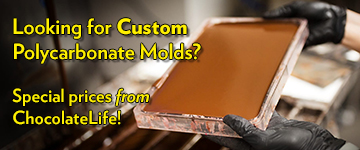Marco;
I understand where you're coming from, but when it comes to recipes and the reasons for ingredients, who says the Europeans have it right? As a businessman selling my wares in Canada, I don't particularly care what other countries do with their chocolate. It's not personal. It's simply thatI'm not selling there. Here in Canada (and in the UK and Switzerland), people like a very creamy,not overly sweetmilk chocolate. The way to do that is obvious - lots of cream, whether it be powdered cream, or powdered skim milk with AMF. In our particular case, I get a fabulous, spray-dried product from a supplier here, and don't have to worry about extra care in the storage, as I would have with AMF. It's a dried product that lasts longer and requires no refrigeration. Our customers are so happy with the recipe I have tried, tested, and put into production, that they often send bars of our milk chocolate to their family in Europe, and return commenting that the recipientslike it better than the chocolate they can get in Europe and have requested more.
Case in point with regard to Italy: Is milk by itself "pure chocolate"? Is sugar by itself "pure chocolate"? What about vanilla? Nope. Nope, and Nope. Yet these ingredients have MUCH higher percentage counts in a "pure chocolate" recipe than lecithin at less than half a percent. Why then can't lecithin be included? It's no more"pure chocolate" than any of the ingredients you listed above. In fact, it's the only NECESSARY ingredientif one creates a recipe with low fluid fat properties (i.e. 70% cocoa beans, 10% cocoa powder, 20% sugar). Having said that, who's to say that Italy has it right either?
When it comes to dark chocolate, we use no lecithin. The CCB content is high enough to give good fluidity, and then we control the viscosity by temperature and crystalization.
Companies like Lindt however (lindt Excellence 70%) need to use lecithin because to increase intensity, they add cocoa powder to the bar on top of the cocoa content. Without lecithin it would be almost impossible to mold. (Note that I'm not saying Lindt 70% is any good. It just so happens to be widely recognized as a "premium" dark chocolate here in Canada.)
They're European. Did they get it right? I'm not sure. I DO know they sell a heck of a lot more every year than my company does! Yes, they're mass producers. However, business is business. Whether you're selling 10 bars, 100 bars, or 1 million bars, you're sellingyour chocolateto make money, and at that moment in time it's no longer about you, or your views. It's about the customer who's willing to PAY to eat your wares, and if they DO pay, then to them you've got it right.
I hope that makes sense, and doesn't come across confrontational. Having been in business for a long time, and been on many chocolate forums, I see all too often,small businesseswho get caught up in politics, terminology, or what "the other guy" is doing, or what "the industry standard" is.
The recipe in the end is very simple: "Find out what your customers want, and give it to them."
Cheers.
Brad


 It seems like it's a competition between us two, judging from your words. Can't add anything more, we have different views. Anyway, 38.000 customers in three years probably are enough to buy you a fancy sport car, and if you are happy with that it's ok.
It seems like it's a competition between us two, judging from your words. Can't add anything more, we have different views. Anyway, 38.000 customers in three years probably are enough to buy you a fancy sport car, and if you are happy with that it's ok.